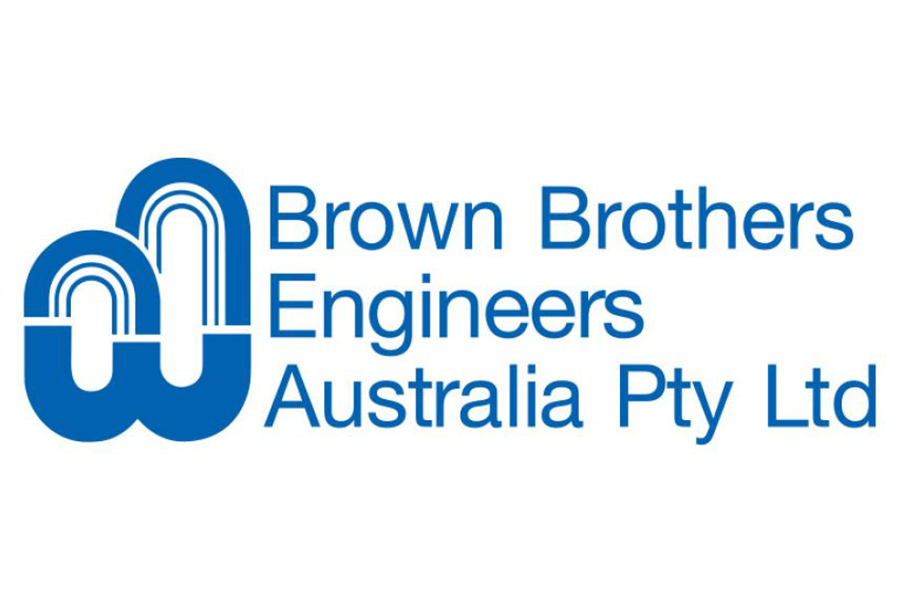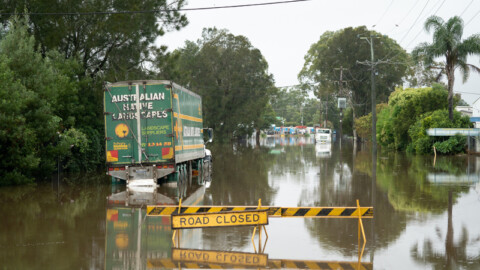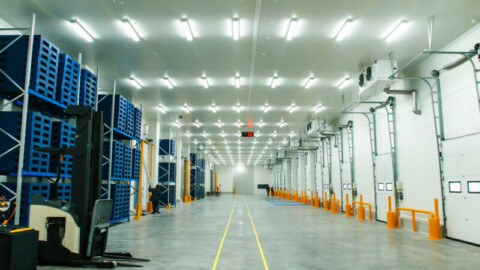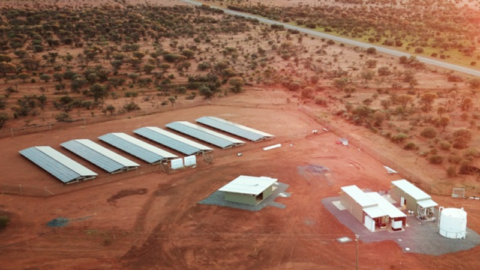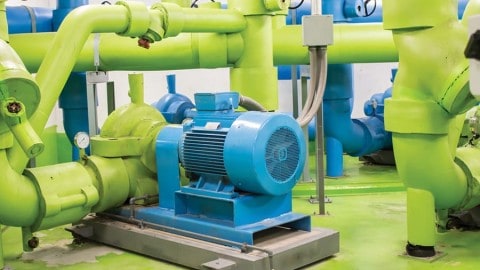By Ray Hardee, P. E., Engineered Software
One of my favourite Aesop Fables is The Race Between the Hare and the Tortoise. The moral of the story is that you can be more successful by doing things slowly and steadily than by acting quickly and without a clear understanding of the bigger picture. In this month’s article, we look at a simple pressurised force main waste treatment system. We will see that decreasing the flow rate through the system can save energy and reduce maintenance costs, while increasing system uptime.
The system
We will be looking at a wastewater collection system in a food processing plant. The system consists of floor drain sump, a sump pump and a holdup tank (see Image 1).

Image 1: A simple waste collection floor drain system
The floor drain sump collects waste from various locations within the facility. The control of the system is based on the level in the floor drain sump. When the level reaches 3.5m the sump pump starts, and when the level in the sump reaches 0.25m the pump stops.
The sump pump was sized to pump down the sump (64m3) in one hour with a constant inflow into the sump of 55m3/hr. After the system was built and placed into operation it only took 45 minutes to pump down the sump, indicating the sump pump was oversized.
Using operating data, the inflow into the floor drain sump ranges from 30 to 55m3/hr based on the facilities production rates. During night operations, the inflow into the floor drain sump is 25m3/hr.
Using this information, we can create an energy balance for the system and determine how much energy is needed for each production rate. Knowing the dimensions of the floor drain sump and the inflow into the floor drains, we can determine how long the sump pump runs for a variety of operating conditions.
Table 1 provides the time it takes to pump down and fill up the floor drain sump at various production flow rates.
Looking at Table 1, notice by reducing the flow into the sump results in a shorter pump on cycle, and a longer pump off cycle when the sump is filling. The fixed speed pump has the same power consumption each time it runs because the system uses an on/off method of level control.
The pump kW/cycle shows the results when the power consumed while the pump is operating during the cycle. The cycle column shows the average kWh consumed by the pump during the full cycle.
We can see as the flow rate into the sump decreases, the pump operates for a shorter period during a cycle. This results in less power consumption at a lower flow into the sump as shown in Table 1.
 The slow and steady look
The slow and steady look
Instead of starting and stopping the pump during each cycle, let’s see what happens when we use a level controller to maintain a constant sump level. When the flow rate into the sump is greater than the flow rate through the pump, the sump level increases.
This increase in level results in an increase in pump speed. If the increased speed causes the flow through the pump to be greater than the sump inflow, the result is a reduction in the sump level.
The level controller adjusts the pump speed to maintain a constant sump level during the entire range of facility operation.
Table 2 shows the pump speed and pump power consumed for the range of expected flow rates into the sump.
Using a level controller, the pump speed is adjusted so the flow rate into the sump equals the flow rate through the pump. By reducing the flow rate through the pump, the fluid velocity in the pipeline is reduced resulting in less system head loss.
This method of level controls requires the pump to be operating all the time, but at a much lower power.
 Conclusion
Conclusion
Now let’s compare the hourly power consumption for the ON/OFF control where the pump is started and stopped as needed versus the level controller where the pump speed is varied to maintain a constant sump level.
With a sump inlet flow of 55m3/hr the average hourly consumption for on/off control is 4.67kWh, where the average hourly consumption for the level control is 1.17kWh. The story is the same for the entire range of flows into the sump.
Now that you have the numbers, at the next race you may want to place your bet on the smarter tortoise instead of the faster hare.
About the author
Ray T Hardee, PE, is the Chief Engineer and a principle founder of Engineered Software Inc., creators of PIPE-FLO® and PUMP-FLO® software. The PIPE-FLO product line helps some of the largest companies across a variety of industries find hidden profit in the design and operation of their fluid piping systems through simulation software, modeling services, and training opportunities. Hardee is a member of the Hydraulics Institute, ASME Energy Assessment for Pumping Systems standards committee and ISO Pumping System Energy Assessment committee. Ray’s publications include Piping System Fundamentals and contributions to HI’s Pump Life Cycle Cost and Optimizing Piping Systems. He can be reached at [email protected].




